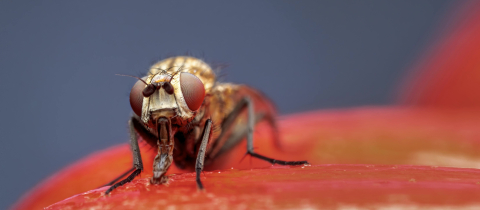I once read somewhere that “cancer is the natural end state of all multicellular organisms”. If this was meant as reassurance to the millions who have suffered the ravages of the merciless affliction, it certainly missed the point. However, it does seem to hold true. People who might have been said to be “dying of old age” two centuries ago are now described as cancer victims. This does not mean that the battle against cancer is futile: better treatment and prevention would mean longer, healthier lives for millions, something that is definitely worth fighting for.
What probably sparked the comment is the fact that a normal human cell already contains all the material necessary to become cancerous; only in very rare cases is cancer triggered by infection from outside factors. To understand how the transition occurs, let’s begin by defining cancer. Cancer is the result of a group of cells dividing uncontrollably and invading normal tissue. Normal cells have proteins that function to control cell growth and division. The genes responsible for producing these proteins are called proto-oncogenes. Proto-oncogenes are beneficial and necessary. Only when they become full-fledged oncogenes can they cause cancer. What often happens in this case is that the gene becomes de-regulated, meaning that protein synthesis becomes excessive and uncontrolled. Since these proteins trigger cell growth and division, the cell can now become a superdivider, out-compete neighboring cells and tissues, and lead to the formation of a tumor.
How does the benign proto-oncogene cross over to oncogene status? The transformation usually occurs as the result of a mutation, often in the part of the gene responsible for controlling the gene’s expression. We all know mutations are bad news. But did you know that mutations are relatively common events? Mutations can occur as the result of environmental carcinogens such as ultraviolet light but also because of chance mistakes made by your cell’s DNA replication machinery. Fortunately, the cell contains a whole squadron of defenses against mutation such as DNA repair mechanisms and, for irreparable genes, cell suicide. The presence of these tumor-suppressor proteins ensures that any abnormal DNA is quickly obliterated. Tumor-suppressors thus decrease an oncogene’s ability to make a normal cell cancerous. However, sometimes mutations occur in the genes that actually encode these tumor suppressors. When this happens, the cell remains partially defenseless against mutations and out-of-control oncogenes. In this way, a series of mutations can pave a cell’s road to cancer.
So, the ultimate balance is between oncogenes and tumor suppressor genes in the cell. Most of us are born with a normally-functioning set of each, such that DNA replication, cell growth and division proceed normally and in a controlled fashion. Thus, many mutations must occur before a cell can slip through the defenses and become cancerous, explaining why cancer incidence increases with age.
Young age at the onset of cancer and a family history can signal a hereditary cancer predisposition. When a mutated copy of a tumor suppressor gene is inherited, an individual only has one functional copy left. It doesn’t take long for a second mutation to occur in the other copy, and initiate the cancer cascade. This is called the “Two Hit Hypothesis”. In spontaneous cancers, both hits occur as a result of mutation, a process which is very unlikely and explains late age of onset. In heritable cancer, one hit is present from birth and the other occurs as a result of mutation. The chance of one mutation occurring is much higher than two, explaining the earlier age of onset for these hereditary cancers.
There is no doubt that cancer is a terrifying and even fatal illness. However, understanding the cellular and genetic mechanisms whereby cancer occurs has opened the door for new methods of prevention, diagnosis and treatment. The more scientists and journalists succeed in dissipating the mysterious haze surrounding cancer, the better prepared we all are to confront and understand its implications.







